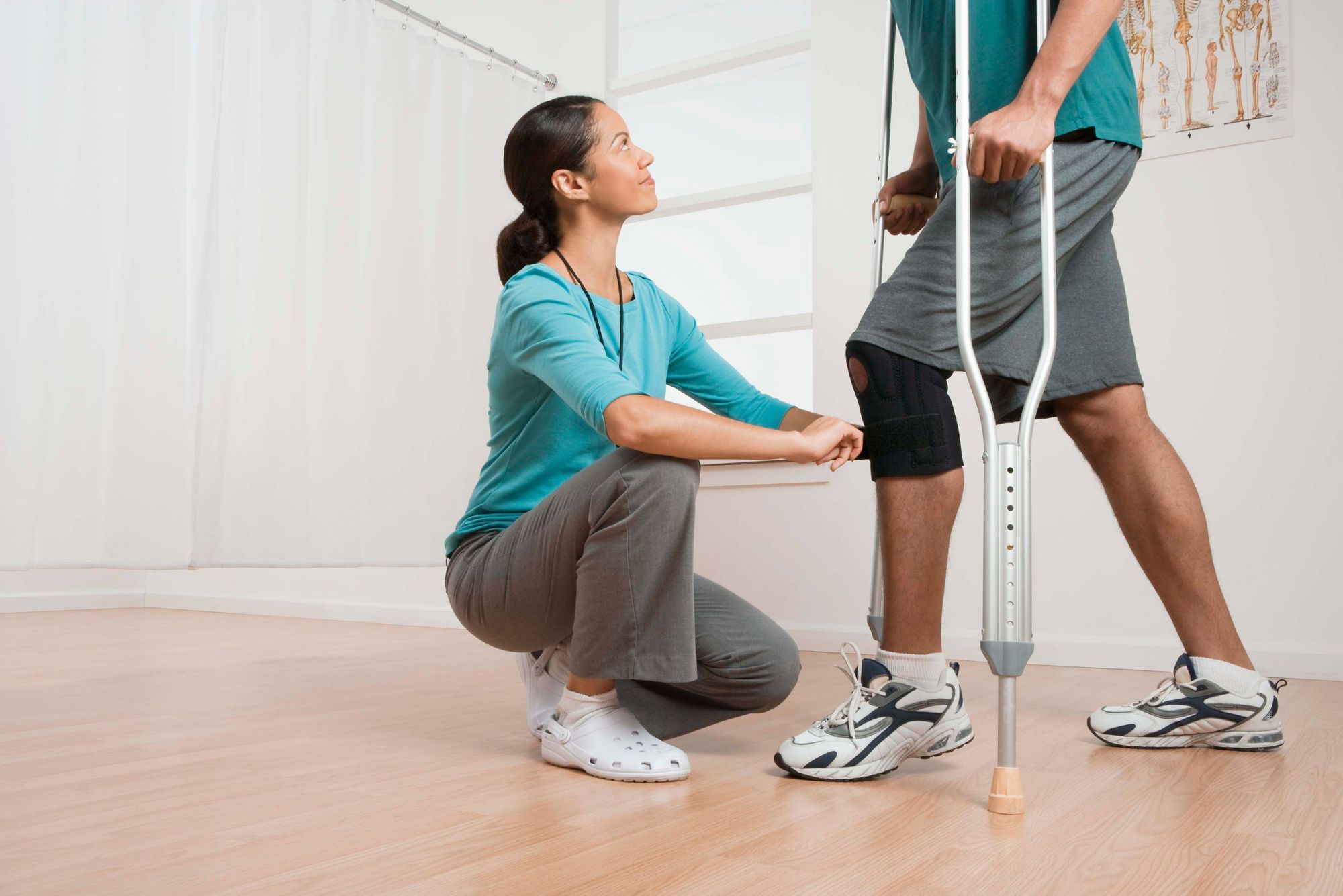Image by Jupiterimages from Photoimages via Canva
After surgery or injury you will need to learn how to use crutches to walk and use the stairs.
The most important thing that you need to find out from your health care provider is how much weight you are allowed to put on your surgical or injured leg. This is often called your "weight bearing status".
Your weight-bearing status will be one of the following:
- Non-weight bearing with 2 crutches - you are not allowed to put weight on your leg
- Toe touch weight bearing with 2 crutches - you can make contact with the ground with your foot but you can not put your weight on the leg
- Partial weight bearing with 2 crutches - you are allowed to put a certain percentage of your total weight on the leg. Usually you will be told 50%, 70% etc by your health care provider.
- Full weight bearing with 1 crutch - you can put your full weight on the leg but you still need a crutch for support or balance
- Full weight bearing no crutches - normal walking with no restrictions
There are a few simple rules about using 2 crutches:
- Stand upright and look forward while walking
- Do not rest the top part of the crutch in your arm pit - instead press it between the inside of your upper arm and the side of your chest
- The crutch should contact the ground halfway between the front and back of your foot on the ground
- If you are non-weight bearing, then slightly swing your body forward and the crutch will contact the ground where your foot would contact the ground
To properly fit your crutch, stand upright with the crutches at a slight angle away from you and leaning between your arm and your body. When you stand in this manner, your wrist crease should be at the level of the foam pad intended for your hands. The wrist crease is above your hand where your wrist bends. If the crutches are too long, they will dig into your arm pit and be very uncomfortable. Most crutches can be adjusted for height near the bottom of the crutch. If you have tried crutches and they do not provide you with enough support to walk, you may need a walker. We have a great video BLOG that can teach you how to safely use a walker.
If you do not know your weight bearing status, contact your health care provider immediately. Watch the video above to see how to walk and use the stairs based on your weight bearing status. There are many more helpful videos of daily physical therapy exercises and how to recover in our Physical Therapy App for ACL injury or surgery, total knee replacement and total hip replacement. You can find the Apple and Android links at the bottom of this blog.
Conclusion
Watch our video above to learn how to walk and use the stairs safely using crutches. Before you begin, you must know your weight bearing status, or much weight you are allowed to put on your leg after injury or surgery. This blog discusses each weight bearing status, how to fit your crutches and some simple rules about using crutches.









